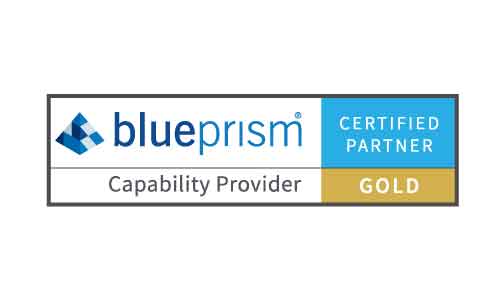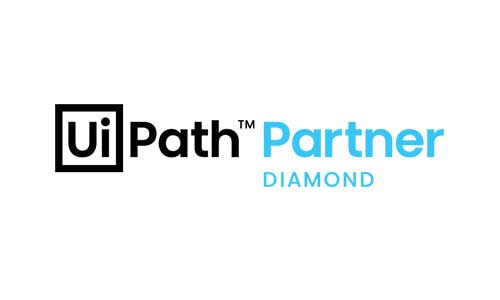Digital Worker
RPA (Robotic Process Automation)
RPA (Robotic Process Automation) is a technology that utilizes pre-defined business logic, established rules and structured data to automate business processes. Software robots built on RPA are able to capture and interpret applications for processing a transaction, manipulating data, triggering responses and communicating with other digital systems. RPA (Robotic Process Automation) is the ideal technology for many labour-intensive knowledge work. It handles repetitive, and rule-based, large volume tasks particularly well.
Download Digital Workforce White Paper
How to Maximize the Productivity of Your RPA Program
In this white paper, we take a deep dive into the productivity of RPA. We’ll examine the issues that prevent organizations from tapping into the maximum productivity of their tools and identify ways to improve results.
Download this white paper to do a productivity exercise on your RPA program and learn ways to drive extraordinary RPA program performance for your company.
This white paper reveals ->
What is a license utilization gap
Why do you have a productivity gap
How can you solve productivity issues
How to optimize your RPA program
What is RPA (Robotic Process Automation)?
Robotic Process Automation (RPA) is software technology that enables quick and easy automation of digital tasks.
Robotic Process Automation -RPA “bots” work similarly to a remote human worker, operating any (and all) systems or applications needed to complete a process. The bots’ ability to interact with pre-existing IT makes it affordable and quick to implement – particularly when Robotic Process Automation is delivered from the cloud.
What kinds of processes can be automated with RPA (Robotic Process Automation)?
Robotic Process Autoamtion can automate rules-based processes where each step can be described in terms of ‘if this, then that’. It is typically most useful when transaction volumes are high.
- are repetitive and
- have predictable steps.
Robotic Process Automation can be delivered either on-premise or as a cloud-based solution. It is typically the first process automation technology organizations work with and can be used to, for example, copy-paste, scrape web data, make calculations, open and move files, build reports, create and send template-based emails, log into programs, and connect to APIs.
RPA - Robotic Process Automation offers a flexible foundation on which to build additional automation capabilities. It processes data based on predetermined rules. However, it can't be used to interpret data – for example, to render meaning from emails written in free text. Instead, by seamlessly combining AI technologies with Robotic Process Automation it is possible to include interpretative tasks – such as data interpretation – as part of an automated process.
Why should I implement RPA (Robotic Process Automation)?
Typical benefits gained from RPA include:
- Alleviated workload
- Free up time and skills to be used for more productive work
- Ability to run processes 24/7
- Faster lead time
- Better cost-efficiency and quick ROI
- Systems integration
- Flexibility to scale processes according to business needs
- Increased reliability and precision by eliminating the risk of human error
- Better customer experience through 24/7 service, faster responses and more flexibility
- Reduced business risk through decreased staffing dependencies when running critical processes
- Enable improved business agility, rapid reaction to change in your operational environment and the testing of new ideas
- Improved ability to collect important data to analyze business performance and support decision-making
How do I get started with RPA (Robotic Process Automation)?
Contact an Intelligent Automation expert at Digital Workforce. You’ll need to consider:
- What are your most important business goals?
- What is your digital strategy?
When your ambition is clear, you can evaluate which tools and skills are required to reach your goals and whether Robotic Process Automation is right for you.
Involve a broad spectrum of people in the discussions early on. Having all key stakeholders engaged from the beginning will help you to ask – and answer – all the right questions, progress quickly, and create a positive culture around automation-induced change throughout your organization.
Find out how you can reach your goals:
When to use RPA (Robotic Process Automation)?
Robotic Process Automation is a perfect match for tasks like applications handling, feeding information to multiple systems, and anything that involves a lot of data intensive work repeatedly entered by specialists. In transformative situations, like integration, mergers, or outsourcing, a large part of the work can be replaced quickly and economically using RPA.
Software robots can also be implemented to postpone IT investments. In the case of integrating legacy IT systems, RPA can replace the need for time consuming and labour intensive work arounds that are required when multiple systems have been poorly integrated over years.
Robotic Process Automation can be a more inexpensive and quicker solution to the same problem. RPA’s competitive advantage comes from its light structure. You can implement RPA technology without changing existing systems. The high cost and operational impact related to reinventing badly integrated IT can be avoided. RPA works as a person would, creating a communication bridge between separate IT systems.

RPA vs Human
RPA i.e. Robotic Process Automation or A Digital Worker versus a human in conducting a data transfer task. Which will win?
A software robot can meet the strictest security standards, since it doesn’t save any processed data. It is assigned with the same user rights as people carrying out the same task. Changes are not required to the applications in use.
Software robots can have the same benefit to productivity as outsourcing, but can maintain control of operations within your organization. Digital Workforce partners with industry-leading RPA technology companies Blue Prism®, UiPath and Robocorp.
RPA (Robotic Process Automation) Technologies

RPA Technology by Blue Prism
Digital Workforce provides Blue Prism technology from the industrialized robot-as-a-service ecosystem using a private cloud-based provider and Azure. Blue Prism® is a pioneer and one of the leading global providers in Robotic Process Automation software. The strengths of Blue Prism® technology include scalability, reusability, lower maintenance requirements and native access to cognitive and AI services.

RPA Technology by UiPath
Digital Workforce provides UiPath technology from the industrialized robot-as-a-service ecosystem Azure. UiPath is the fastest growing RPA software company in the world. The strengths of UiPath technology include specific solutions for front-end automation, a free trial version and an open approach to RPA.

RPA Technology by Robocorp
Digital Workforce provides Robocorp technology from the industrialized Outsmart ecosystem and Azure. Robocorp is The most effective open-source automation platform in the world. It's based on Python and developer tools are free to use. Try ReMark and see how AI will help you build automations faster.




